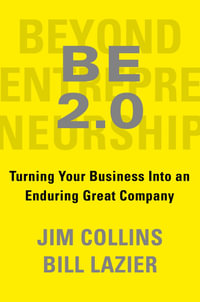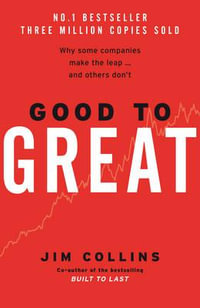
Turning Goals Into Results (Harvard Business Review Classics)
The Power of Catalytic Mechanisms
By: Jim Collins
Paperback | 17 May 2017
At a Glance
Paperback
$14.99
Aims to ship in 5 to 10 business days
When will this arrive by?
Enter delivery postcode to estimate
But it doesn't have to be that way. In this book, Jim Collins introduces the catalytic mechanism, a simple yet powerful managerial tool that helps translate lofty aspirations into concrete reality. Catalytic mechanisms, the crucial link between objectives and performance, are a galvanizing, nonbureaucractic means to turn one into the other. What's the difference between catalytic mechanisms and most traditional managerial controls?
Catalytic mechanisms share five characteristics:
(1) they produce desired results in unpredictable ways
(2) they distribute power for the benefit of the overall system, often to the discomfort of those who traditionally hold power
(3) catalytic mechanisms have teeth
(4) they eject "viruses" those people who don't share the company's core values; and
(5) they produce an ongoing effect.
To illustrate how catalytic mechanisms work, the author draws on examples of individuals and organizations that have relied on such mechanisms to achieve their goals. The same catalytic mechanism that works in one organization, however, won’t necessarily work in another. Catalytic mechanisms must be tailored to specific goals and situations. To help readers get started, Collins offers some general principles that support the process of building catalytic mechanisms effectively.
About the Author
Jim Collins is a student of companies - great ones, good ones, weak ones, failed ones - from young start-ups to venerable sesquicentenarians. The author of the national bestseller Good To Great and co-author of Built to Last, he serves as a teacher to leaders throughout the corporate and social sectors. His most recent book is Great by Choice, a look at why some companies thrive in uncertain times. His work has been featured in Fortune, Business Week, The Economist, USA Today, and Harvard Business Review.
ISBN: 9781633692589
ISBN-10: 1633692582
Series: Harvard Business Review Classics
Published: 17th May 2017
Format: Paperback
Language: English
Number of Pages: 96
Audience: General Adult
Publisher: Harvard Business Review Press
Country of Publication: US
Dimensions (cm): 16 x 16.9 x 0.8
Weight (kg): 0.08
Shipping
| Standard Shipping | Express Shipping | |
|---|---|---|
| Metro postcodes: | $9.99 | $14.95 |
| Regional postcodes: | $9.99 | $14.95 |
| Rural postcodes: | $9.99 | $14.95 |
How to return your order
At Booktopia, we offer hassle-free returns in accordance with our returns policy. If you wish to return an item, please get in touch with Booktopia Customer Care.
Additional postage charges may be applicable.
Defective items
If there is a problem with any of the items received for your order then the Booktopia Customer Care team is ready to assist you.
For more info please visit our Help Centre.











